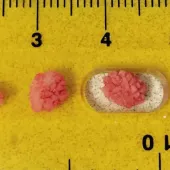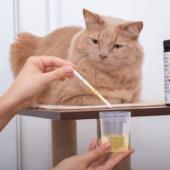Urinary problems - the 'blocked' cat : Causes, Symptoms, and Urgent Care
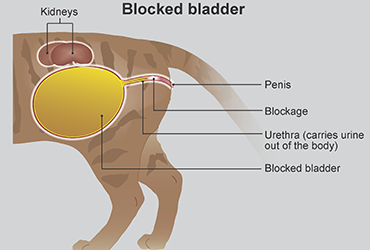
Cat owners know that their feline friends can sometimes exhibit unusual behaviors, and one of the most concerning issues is a blocked cat, a condition that affects the urinary tract. This situation is not just uncomfortable for the cat; it can be a life-threatening emergency. Understanding the causes, symptoms, and the importance of immediate care is crucial for every cat owner.
Urinary problems - the 'blocked' cat
Feline lower urinary tract disease (FLUTD) is a catch-all term used by vets to describe a number of conditions which cause cats pain and discomfort when trying to pass urine. These include different types of bladder stones, blockages in the tubes running from the bladder to the outside and inflammation of the bladder itself (cystitis). About three in every 100 cats will be affected at some stage in their lives and some can suffer recurrent problems. In extreme cases your cat may be unable to empty its bladder and may die without emergency treatment.

What causes FLUTD?
Domestic cats are suited to obtain the majority of their water from their diet without the need to drink, as they are descended from cats that hunted in the desert regions of North Africa and the Middle East. Many cats do not drink enough water to make up for the fact that commercially prepared diets frequently include less water than natural ones. It is exceedingly challenging to determine the exact etiology of FLUTD in up to half of the affected cats. Nonetheless, certain elements seem to raise the risk, including:
- Stressful experiences such as moving house may trigger problems in susceptible cats.
- Diet - mineral balance, urine pH and water intake may all affect the risk of the disease.
- Infection may produce swelling and the formation of pus which can block the cat's urine tubes (ureter and urethra). Diabetes and some viral diseases may make cats more vulnerable to infection.
- Obesity - problems are more common in overweight and inactive cats which are often too lazy to go outside to toilet frequently.
- Urine retention - cats who, for some reason, hold their urine for long periods, ie. do not go to the toilet frequently may be at greater risk of developing bladder stones.
- Anatomical abnormalities or tumours may make it difficult for some cats to pass urine.
Will my cat get FLUTD?
Male cats that have had their urethras cleaned out are the most susceptible to obstructions in this tube that connects the bladder to the penis. However, unneutered males and females can also get the disease. Males have a longer and narrower urethra than females, which appears to enhance the likelihood that stones or inflammation in the urine may obstruct it. With age, the disease's chances diminish, although it is more common in younger cats. Cats that are affected are typically two to six years old.
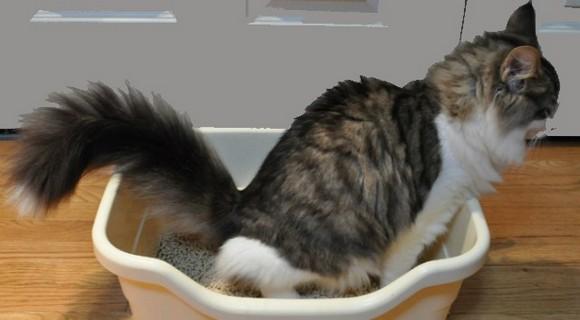
How do I know if my cat has FLUTD?
If your cat is suffering from FLUTD it will make regular visits to its litter tray or outside to its favourite toilet area but without much success. There may be small amounts of dark or red (blood-stained) urine. Your cat may look as if it is straining and may cry out in pain or lick around its bottom or penis area. The discomfort may cause changes in its toilet habits and a normally reliable cat may try to go to the toilet in the wrong place. If there is a total blockage of its tubes, pressure can build up in the bladder causing it to burst. Alternatively there may be kidney failure and poisons normally filtered out by the kidneys will build up in the blood.
Symptoms of a Blocked Cat
Recognizing the signs of a blocked cat is crucial for immediate action. Common symptoms include:
-
Frequent Attempts to Urinate: Cats may visit the litter box repeatedly, trying to urinate without producing much urine.
-
Straining to Urinate: Cats may exhibit visible signs of discomfort while attempting to urinate, such as vocalization, restlessness, or squatting for an extended period.
-
Pain and Agitation: Cats in pain might exhibit aggression or hide in unusual places.
-
Licking Genital Area: Excessive licking of the genital area is a common sign of discomfort.
-
Lack of Appetite: Cats with urinary blockages often lose their appetite and become lethargic.
How can we be sure that it is FLUTD?
Often the discomfort of FLUTD is mistaken for constipation. If you are in any doubt assume FLUTD and consult your vet as soon as possible. Your vet may need to take a urine sample to show the difference. An affected cat will have abnormalities such as crystals in the urine (mineral salts which cause bladder stones) or unusually concentrated urine. Blood samples will also show evidence of kidney damage if this has already occurred. An x-ray may help your vet to find the source of the blockage.
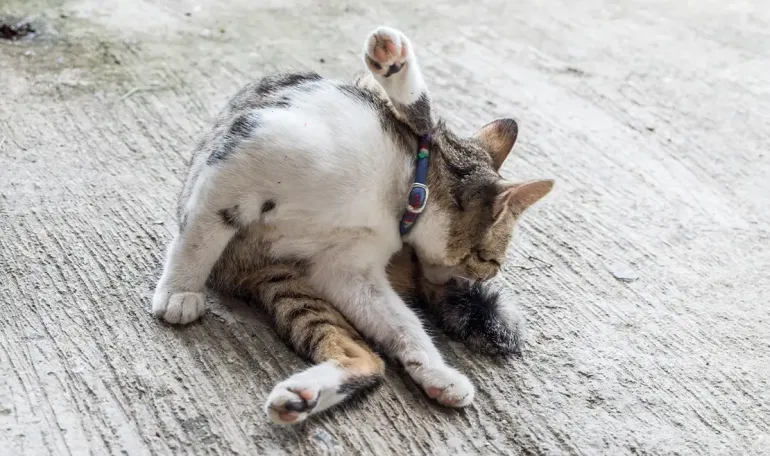
Urgent Care and Treatment
If you suspect your cat is blocked, it is a medical emergency that requires immediate veterinary attention. Prompt action can prevent serious complications and save your cat's life.
What can be done to treat the disease?
A complete blockage is an emergency and your vet will have to act fast. At first your cat may only seem mildly depressed with occasional vomiting but within 48 hours it could have lapsed into a coma and died. Your cat will be sedated (or anaesthetised) and a tube ('catheter') inserted into its bladder to drain the trapped urine and relieve the pressure. Occasionally stones may be surgically removed. Less serious cases will be given pain killers and drugs to reduce the inflammation. Antibiotics may help get rid of any infection. Remember, only use the medicines recommended by your vet - some human drugs are poisonous to cats.
Treatment Options:
-
Urinary Catheterization: The veterinarian may insert a urinary catheter to remove the obstruction and allow urine to flow freely.
-
Intravenous Fluids: Cats with urinary blockages are often dehydrated; intravenous fluids help rehydrate and flush out toxins from the body.
-
Pain Management: Pain relief medications are administered to alleviate discomfort.
-
Monitoring: After initial treatment, your cat may need to be monitored to ensure normal urination resumes.
-
Prevention: To prevent future blockages, your veterinarian might recommend dietary changes, increased water intake, or prescription diets that promote urinary health.
How can I stop the disease coming back?
The best approaches to treat and prevent FLUTD in cats are to encourage them to drink lots of water and to make dietary adjustments. You have to make sure that fresh, clean water is always available. For the remainder of its life, you should ideally only give your cat moist food and encourage it to drink more water by adding a third of a cup to each meal.
To ensure that the water absorbs the flavor of the meal, mix the food well and let it stand for ten minutes before giving. Your veterinarian can prescribe a particular diet that lowers the likelihood of stones forming. For their pee to remain acidic, some cats might require regular medication. Because cats are picky eaters, an unclean litter tray may cause them to retain pee, which could contribute to the development of stones.
The affected cat should be encouraged to use its own litter pan if you have other cats in your home. This will enable you to monitor the amount of urine it generates and identify any early warning indicators of more issues.
Conclusion
A blocked cat is a serious and potentially life-threatening condition. Cat owners must be vigilant about their pets' behavior and seek immediate veterinary care if any symptoms indicative of urinary blockage are observed. Timely intervention is key to ensuring your cat's well-being and preventing further complications. By being aware of the signs and acting swiftly, you can help your feline companion recover and enjoy a healthy, happy life.

